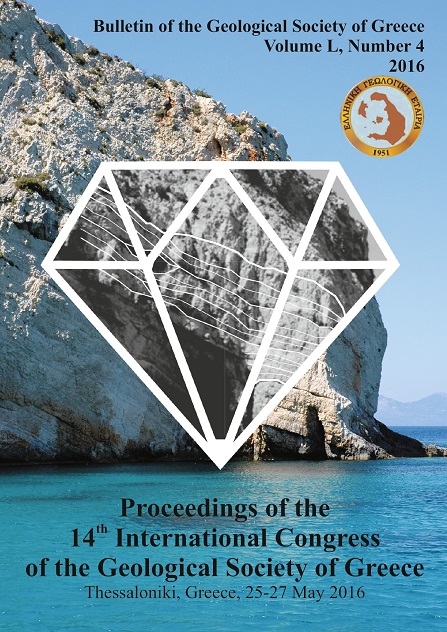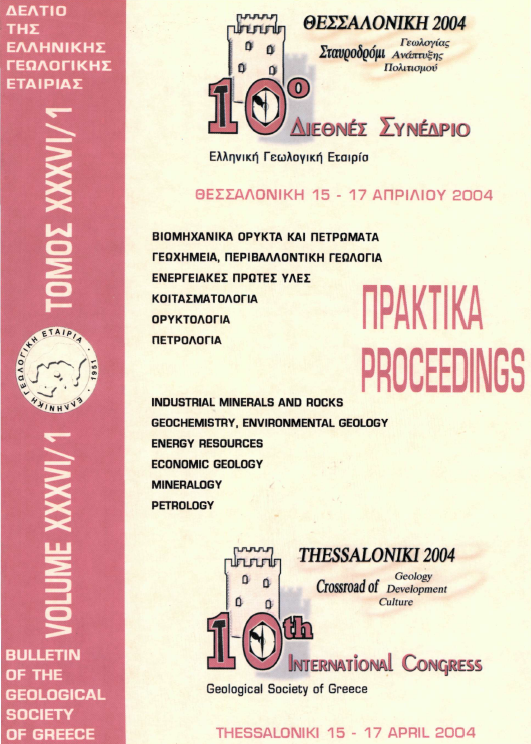PETROLOGICAL INVESTIGATION OF CARBONATE ROCKS FROM THE IONIAN ZONE (ETOLOAKARNANIA, WESTERN GREECE)
Περίληψη
The petrographic features of the carbonate rocks from the Ionian Zone in the Etoloakarnania Prefecture are presented. They are represented by limestones with minor dolomite. The limestones include: (i) wackestones (or sparse micrites), with poor presence of allochems within a mud matrix; (ii) packstones (or packed micrites) with increasing levels of carbonate grains that are still surrounded by micrite matrix, and (iii) grainstones (or sparites) containing allochems that are cemented with sparry calcite crystals, while the mud matrix is absent. Bioclasts are the dominant carbonate components in most of the samples accompanied by infrequent pelloids, intraclasts, lithoclasts and ooids. Crystalline limestones were not identified. Quartz, apatite, barite, anhydrite, halite, clay minerals, magnetite and ilmenite have been determined as accessory phases. The results show that mineralogical and petrographic features of the analyzed carbonate rocks are related to their evolution during the development of the Ionian Zone from a shallow-marine platform to a deep water basin.
Λεπτομέρειες άρθρου
- Πώς να δημιουργήσετε Αναφορές
-
Bourouni, P., Tsikouras, B., & Hatzipanagiotou, K. (2010). PETROLOGICAL INVESTIGATION OF CARBONATE ROCKS FROM THE IONIAN ZONE (ETOLOAKARNANIA, WESTERN GREECE). Δελτίο της Ελληνικής Γεωλογικής Εταιρείας, 43(5), 2540–2552. https://doi.org/10.12681/bgsg.11661
- Ενότητα
- Πετρολογία και Ορυκτολογία

Αυτή η εργασία είναι αδειοδοτημένη υπό το CC Αναφορά Δημιουργού – Μη Εμπορική Χρήση 4.0.
Οι συγγραφείς θα πρέπει να είναι σύμφωνοι με τα παρακάτω: Οι συγγραφείς των άρθρων που δημοσιεύονται στο περιοδικό διατηρούν τα δικαιώματα πνευματικής ιδιοκτησίας επί των άρθρων τους, δίνοντας στο περιοδικό το δικαίωμα της πρώτης δημοσίευσης. Άρθρα που δημοσιεύονται στο περιοδικό διατίθενται με άδεια Creative Commons 4.0 Non Commercial και σύμφωνα με την οποία μπορούν να χρησιμοποιούνται ελεύθερα, με αναφορά στο/στη συγγραφέα και στην πρώτη δημοσίευση για μη κερδοσκοπικούς σκοπούς. Οι συγγραφείς μπορούν να: Μοιραστούν — αντιγράψουν και αναδιανέμουν το υλικό με κάθε μέσο και τρόπο, Προσαρμόσουν — αναμείξουν, τροποποιήσουν και δημιουργήσουν πάνω στο υλικό.






